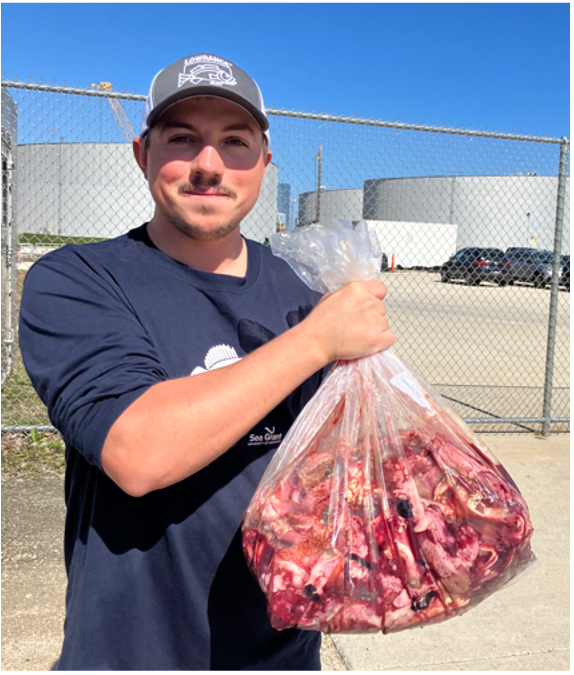Dr. William Karasov’s work in physiological ecology has changed the way scientists look at how animal species absorb and or eliminate nutrients and toxins, and it was more than enough to attract the attention of the American Association for the Advancement of Science (AAAS), the national organization that just named the University of Wisconsin-Madison professor of ecology one of 388 fellows inducted into its ranks in 2013. Karasov was only one of four UW-Madison professors to receive the honor.
And the University of Wisconsin Sea Grant Institute has been proud to be a supporter of Karasov’s research since the mid-1990s.
“It wouldn’t surprise me if a good 20 percent of my published work is supported by Sea Grant,” said Karasov.
Of his lab’s last 100 papers published in peer-reviewed journals, 24 were related to research projects that had UW Sea Grant support. The most recent were tied to Karasov’s recent research into the effects of polybrominated dipheny ethers (PBDEs) on the development of Leopard frogs. His lab reported that these toxins, commonly used as a flame retardant in popular consumer products, can slow tadpole growth and development and alter gonad structure. Karasov referenced this research when he delivered the keynote presentation at last year’s meeting of the Midwest Chapter of Society for Environmental Toxicology and Chemistry.
Karasov ‘s work with frogs continues—again with UW Sea Grant support—to determine how changes in environmental conditions (think global warming) affect frog and tadpole responses to toxins like PBDE. Specifically, what are the effects of temperature on the frog’s rates of exposure and elimination of toxins and their relative sensitivity to the toxins?
While his research remains in the early stages, initial findings show that frogs living in environments where the temperatures are near 28 degrees Celsius eliminate toxins at a rate that’s 6-8 times higher than frogs living in lower temperatures. While that sounds like a net positive effect for the warm-weather frogs, Karasov cautioned against assuming too much too early.
“We haven’t calculated how rates of absorption are affected by temperature,” he said. “It’s true that at higher temperatures, the animals ate a lot more and grew larger—so they’re also taking in more toxin. That said, the temperature effect was much bigger than we expected.”
No matter how that project turns out, Karasov is both humbled and honored by his induction into AAAS.
“I am proud that our work has been recognized… and I say ‘our work’ because the progress is the result of a group effort,” said Karasov. “For example, my first Sea Grant supported Ph.D. student, Robin Jung (1996), suggested working on frog ecotoxicology, and my most recent Ph.D. graduate, Tawnya Cary (2013), was the one who suggested we focus on impacts of PBDEs. I hope the other scientists that work with me share in that pride and that people recognize that progress in science is typically a group effort.”





